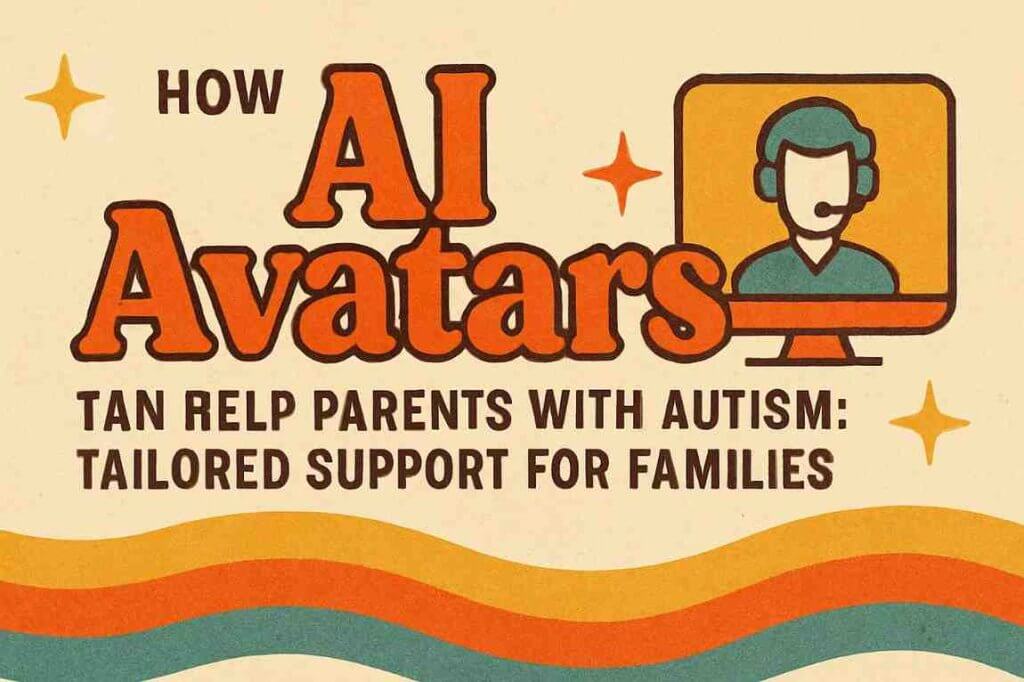Autism spectrum disorder (ASD) impacts millions of people globally, and the issues of communication, social interaction, and behavior are dominant in everyday life. For parents whose children belong to the autism spectrum, the experience tends to be daunting, with the incessant search for individualized tools and techniques that can offer support. In this changing world, AI avatars have proven to be a revolutionary remedy for families dealing with autism. Utilizing innovative technology, AI avatars provide adaptive, interactive assistance capable of enhancing communication, emotional intelligence, and academic performance in autistic children.
Recognizing the Need for Adaptive Support
Autism parents usually encounter numerous challenges. One of the greatest challenges is the communication challenge. Conventional therapy and communication aids can at times not be effective with each child since autism impacts people differently. Some children respond more positively to visual stimuli, while others respond more to technology-based approaches.
This is where AI avatars enter the scene. AI avatars can mimic human interaction in a manner that is more intuitive and engaging for kids. Avatars give children a secure, controlled space in which they can rehearse social skills, respond to visual cues, and get individualized feedback—things particularly valuable for kids with autism.
The Role of AI Avatars in Communication Development
Communication challenges are a defining characteristic of autism. For some children, verbal communication can be especially difficult. It’s not that they don’t want to communicate—it’s just that traditional forms of communication might not work as well. AI avatars provide a bridge by creating an interactive communications experience that enables children to communicate on their own terms.
AI avatars can also be custom-made to react to certain gestures, voice commands, or even eye movements. The avatars can speak, alter their expressions, and even simulate emotions, providing an environment that is more relatable for children with autism. Through the use of these avatars, children can practice social cues, recognize emotions, and improve their talking skills without having to worry about direct face-to-face interaction.
In addition to this, an AI avatar can be designed to exhibit different emotional faces, facilitating children’s comprehension of different emotions in visual and easily understandable terms. This can specifically be beneficial in learning to be empathetic since the child is able to observe an avatar smiling, crying, being frustrated, or excite, and relate those emotions to their own.
Integration of software such as invideo AI’s video app within the learning process can further amplify these advantages. Parents may utilize such apps to develop interactive videos in which avatars act as guide figures, instructing their kids about emotions, social situations, or even mundane tasks. Such applications allow kids to view and interact with educational as well as comforting video content, rendering learning more enjoyable as well as less fearful.
Personalized Learning through AI Avatars
Another key strength of AI avatars is that they can be personalized to fit the specific needs of a child. Each autistic child will have strengths and weaknesses, and each requires individualized support. The AI avatars can be programmed to respond to these unique needs, modifying the way they behave, the tone, and the response to match the child’s speed and inclinations.
For instance, if the child is not able to grasp emotions, the avatar can concentrate on specifically teaching facial expressions and body language related to various feelings. If the child is unable to socialize properly, the avatar can offer virtual role-playing exercises, where the child can learn to greet, take turns in talking, and react to social signals.
Secondly, parents can vary the degree of complexity in the interaction depending on the progress of the child. In the long run, the avatar can present increasingly advanced scenarios, set challenges for the child through new prompts, and issue immediate feedback that assists the child to learn and develop.
Improving Emotional Support Through AI Avatars
Regulating emotions can prove to be hard for children with autism. Parents find it challenging to guide their children through feelings, particularly when they can’t always articulate how they feel. AI avatars are able to provide a tangible and visual form of support for emotions. Through the mimicry of an array of emotional states, AI avatars provide children with a platform to see and learn about emotions in an accessible and non-intimidating way.
Parents can utilize AI avatars to instruct children on how to deal with various emotions. For instance, an avatar can exhibit soothing skills when the child is anxious or frustrated. The avatar may lead the child in deep breathing exercises or give comforting remarks when the child is upset. These encounters can provide the child with coping skills that they can apply during stressful moments while engaging with a trusted character.
The consistent, non-judgmental interaction provided by an avatar allows children with autism to experiment with emotional expressions without the fear of being misunderstood. This can build a foundation of trust and emotional regulation that is crucial for their development.
AI Avatars in Education for Children with Autism
Children with autism frequently need special accommodations in their education. Standard teaching methods may not be as effective, and children can do well with learning tools that are tailored to their needs. AI avatars offer a distinct, tailor-made solution to this issue in the form of a personalized, visual, interactive learning experience.
With an AI video app, kids are able to view learning content where the avatars are the focal point in explaining and navigating the content. Be it basic math, reading, or social studies, these avatars are able to break down the hard-to-understand subjects into simple explanations. Kids are able to respond back to the avatar, send queries, and even get hints and tips when they’re lost on a task.
In addition, the repetitive process involved in video-based learning allows children who have autism to go over the content as frequently as possible in order to assist in the reinforcement of important concepts and skills. Positive reinforcement can be delivered through AI avatars by praising children for advancements and positively correcting errors in a reassuring manner.
Fostering Independent Learning and Socialization
Aside from what they contribute to communication, emotional support, and learning, AI avatars also promote self-directed learning. By providing children an opportunity to learn with or from a non-critical and malleable avatar, the tools enable them to own their learning process. AI avatars serve as mentors, guiding children through social and learning situations at their own tempo.
They also offer socialization opportunities in a safe and comfortable manner. Children with autism tend to have difficulty with social anxiety or judgment phobias. AI avatars remove these obstacles by offering a low-key setting where kids are able to acquire and hone social skills on their own timeline.
Conclusion: A Bright Future for AI Avatars in Autism Support
The arrival of AI avatars has opened up a thrilling possibility for autism parents. With their capability to deliver tailored communication, emotional support, educational direction, and socialization practice, AI avatars are changing the manner in which families deal with autism therapy and development. Whether it is through an AI video application or engaging learning instruments, AI avatars are dismantling obstructions and opening up new avenues for advancement, learning, and connection.
For parents who are coping with the obstacles of autism, AI avatars present a convenient, efficient, and helpful solution that can be specifically designed to suit their child’s individual needs. As technology advances, it’s certain that AI avatars will become an important component in helping families and creating a brighter, more accessible future for autistic children.
Cassia Rowley is the mastermind behind advertising at The Bad Pod. She blends creativity with strategy to make sure ads on our site do more than just show up—they spark interest and make connections. Cassia turns simple ad placements into engaging experiences that mesh seamlessly with our content, truly capturing the attention of our audience.


